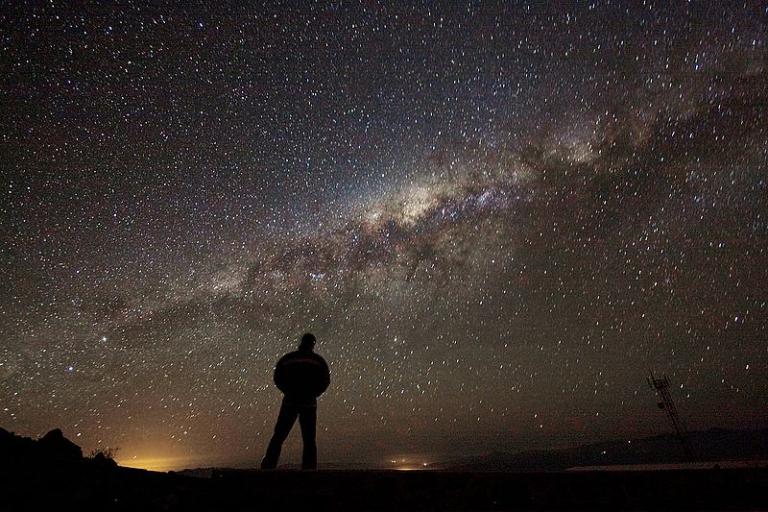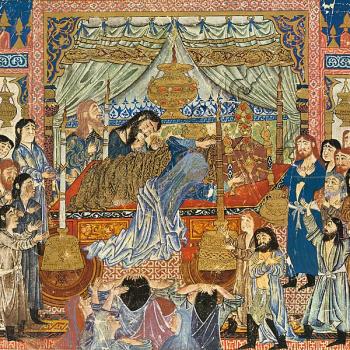
According to the conception of geologists the earth passed through ages of preparation, to us unmeasured and immeasurable, during which countless generations of plants and animals existed in great variety and profusion and gave in part the very substance of their bodies to help form certain strata which are still existent as such. . . .
Geologists say that these very simple forms of plant and animal bodies were succeeded by others more complicated; and in the indestructible record of the rocks they read the story of advancing life from the simple to the more complex, from the single-celled protozoan to the highest animals, from the marine algae to the advanced types of flowering plant — to the apple-tree, the rose, and the oak.
What a fascinating story is inscribed upon the stony pages of the earth’s crust! . . . This record of Adam and his posterity is the only scriptural account we have of the appearance of man upon this earth. But we have also a vast and ever-increasing volume of knowledge concerning man, his early habits and customs, his industries and works of art, his tools and implements, about which such scriptures as we have thus far received are entirely silent. Let us not try to wrest the scriptures in an attempt to explain away what we cannot explain.
The opening chapters of Genesis, and scriptures related thereto, were never intended as a textbook of geology, archaeology, earth-science or man-science. Holy Scripture will endure, while the conceptions of men change with new discoveries. We do not show reverence for the scriptures when we misapply them through faulty interpretation.
James E. Talmage, “The Earth and Man,” address delivered in the Salt Lake Tabernacle on 9 August 1931; published by the Church of Jesus Christ of Latter-day Saints.
A native of England, Elder Talmage was trained (through to one of the earliest Ph.D.s, if not the earliest, ever earned by a Latter-day Saint) as a geologist and served in the Quorum of the Twelve Apostles from 1911 until his passing in 1933.
The time of creation has ever been a subject of much comment and dispute. Yet I challenge anybody to produce from the Bible itself any finite limitation whatsoever of the periods of creation. By strained inferential references and interpretations men have sought to set the time in days or periods of a thousand years, but I feel sure that no justification of such limitations is warranted by the scriptures themselves. If the evolutionary hypothesis of the creation of life and matter in the universe is ultimately found to be correct, and I shall neither be disappointed nor displeased if it shall turn out so to be, in my humble opinion the Biblical account is sufficiently comprehensive to include the whole of the process.
Stephen L. Richards, “An Open Letter to College Students,” Improvement Era, vol. 36 (June 1933), pp. 451-453, 484-485.
At the time that he wrote this “Open Letter,” Elder Richards (originally an attorney, trained at the University of Chicago) was a member of the Council of the Twelve. Later, from 1951 until his death in 1959, he would serve as first counselor in the First Presidency of the Church of Jesus Christ of Latter-day Saints.
Truth is truth forever. Scientific truth cannot be theological lie. To the sane mind, theology and philosophy must harmonize. They have the common ground of truth on which to meet.
John A. Widtsoe, Joseph Smith as Scientist, originally published in 1908, Bookcraft, 1964, p. 156.
Born in Norway and educated at Harvard University and Germany’s Universität Göttingen in biochemistry, Elder Widtsoe served as president of Utah State University and then of the University of Utah prior to his calling as an apostle in 1921. He remained one of the Twelve until his death in 1952.
[T]o limit and insist upon the whole of life and death to this side of Adam’s advent to the earth, some six or eight thousand years ago, as proposed by some, is to fly in the face of the facts so indisputably brought to light by the researcher of science in modern times, and this as set forth by men of the highest type in the intellectual and moral world; not inferior men, or men of sensual and devilish temperament, but men who must be accounted as among the noblest and most self-sacrificing of the sons of men — of the type whence must come the noblest sons of God, since “the glory of God is intelligence” (D&C 93:36); and that too the glory of man. These researchers after truth are of that class. To pay attention to and give reasonable credence to their research and findings is to link the church of God with the highest increase of human thought and effort. On that side lies development, on the other lies contraction. It is on the former side that research work is going on and will continue to go on, future investigation and discoveries will continue on that side, nothing will retard them, and nothing will develop on the other side. One leads to narrow sectarianism, the other keeps the open spirit of a world movement with which our New Dispensation began. As between them which is to be our choice?
B. H. Roberts, The Truth, the Way, the Life, originally written 1931, published by Smith Research Associates, Salt Lake City, UT, 1994, p. 364.
Originally from England, B. H. Roberts, who served in the First Council of the Seventy from 1888 until his passing in 1933, is widely esteemed as one of the greatest intellectual figures in Latter-day Saint history.
These quotations come from Dr. David Bailey’s excellent website Science Meets Religion.












